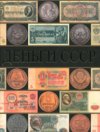
-
 Anglický jazyk
Anglický jazyk
The Scythian Neapolis (2nd century BC to 3rd century AD)
Autor: Yurij P. Zaytsev
In 1827, a local collector of antiquities encountered a vehicle carrying stones from the site of Kermenchik/Simferopol on the Black Sea near Chersonesos. The director of the Odessa Museum immediately recognized the importance of these finds and rushed to... Viac o knihe
Na objednávku
109.38 €
bežná cena: 124.30 €
O knihe
In 1827, a local collector of antiquities encountered a vehicle carrying stones from the site of Kermenchik/Simferopol on the Black Sea near Chersonesos. The director of the Odessa Museum immediately recognized the importance of these finds and rushed to the site. In the first publication on the site, the author claimed to have discovered the Neapolis built by the Scythian, King Skiluros. Thus began the archaeological discoveries at a site that has fascinated excavators to this day. The author of this present monograph summarizes the decades of research and theories connected with this important site and its environs: features, architecture, rites, material cultural, trade, and cult objects. A uniform chronological and cultural model for Scythian Neapolis is proposed and phased characteristics show its historical evolution (c.300 BC to 300 AD). A group of farmsteads developed into a settlement, then into a royal fortress with a palace/temple complex, then into a significant fortified settlement of some scale, then once more into a royal (?) fortress before becoming the unfortified centre of an agrarian territory as the headquarters of a Bosphorean deputy. One Appendix concentrates specifically on the Mausoleum of King Skiluros, while the other details the inscriptions and sculptures from the 'Southern Palace' site.
Translated from Russian by Valentina Mordvintseva
- Vydavateľstvo: British Archaeological Reports Oxford Ltd
- Rok vydania: 2004
- Formát: Paperback
- Rozmer: 297 x 210 mm
- Jazyk: Anglický jazyk
- ISBN: 9781841715797






 Ruský jazyk
Ruský jazyk 





